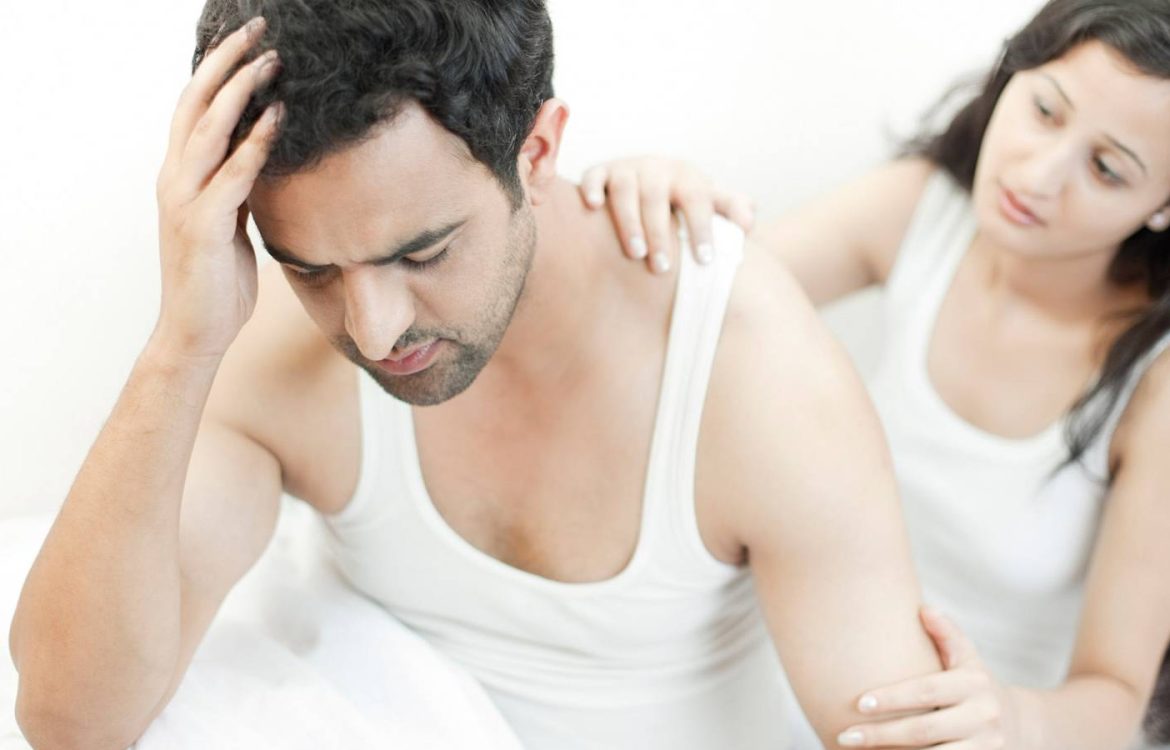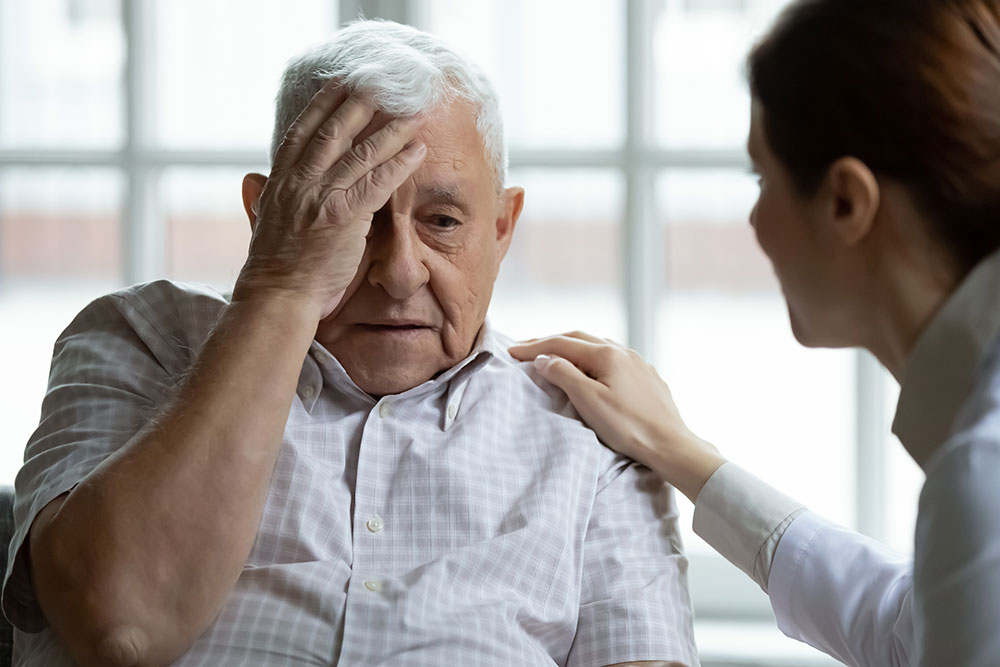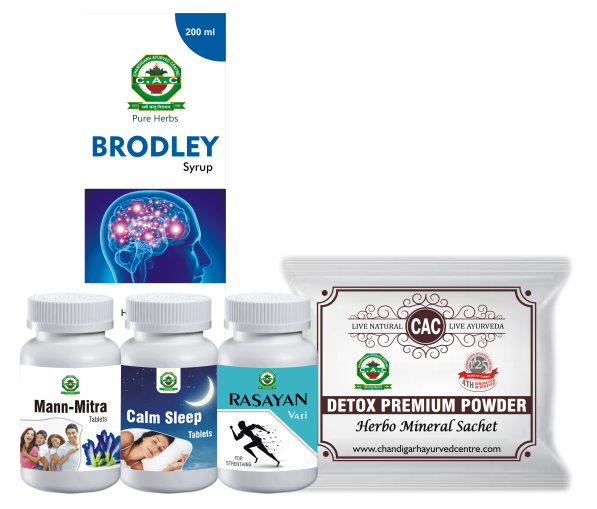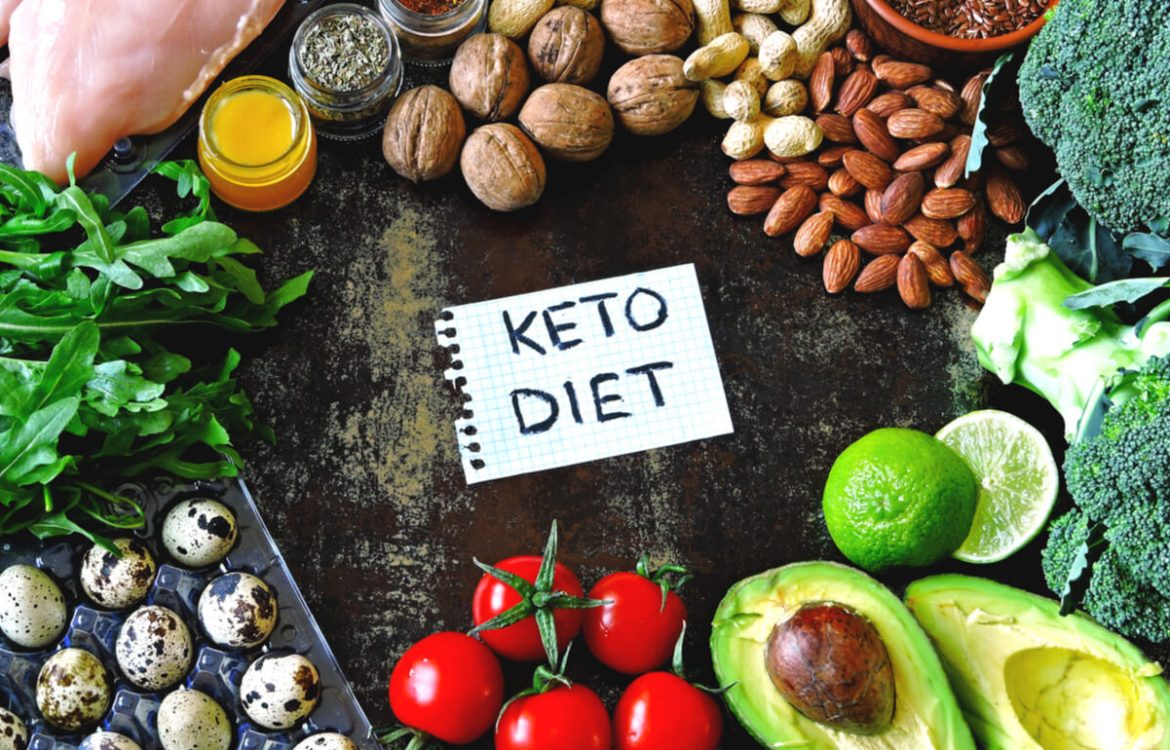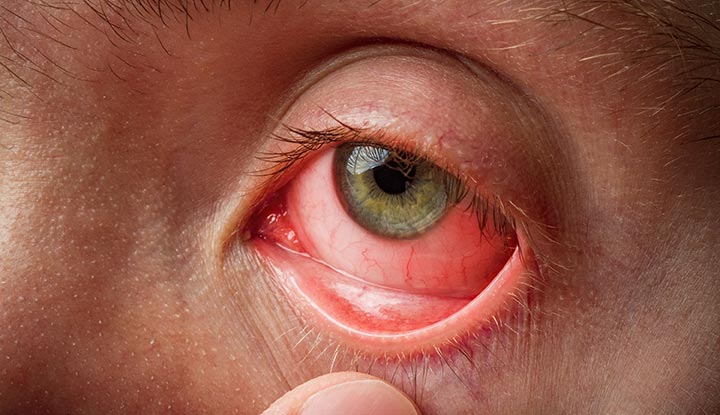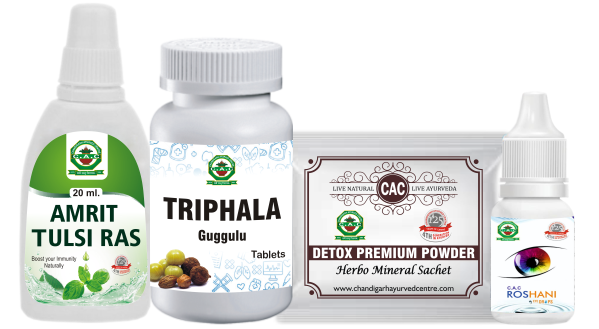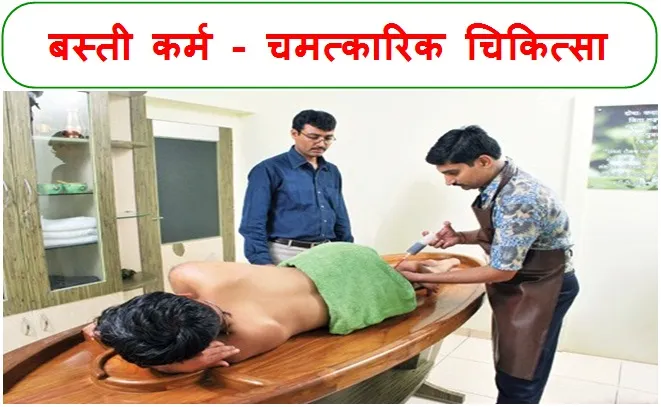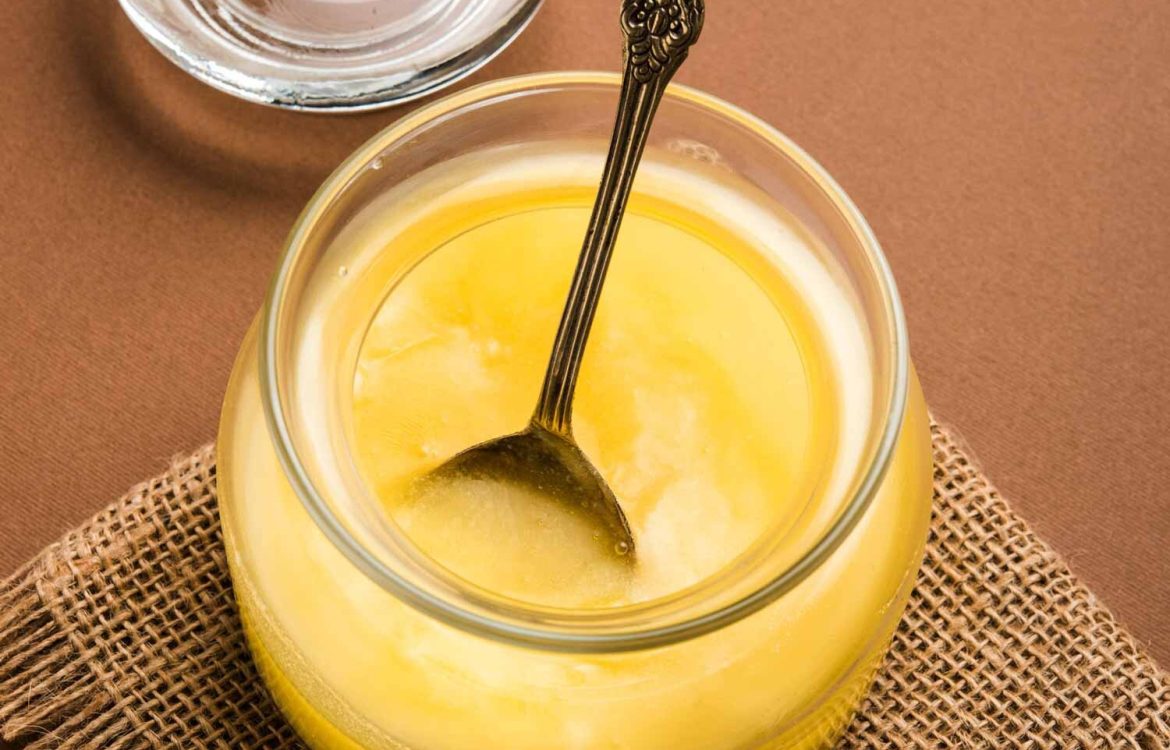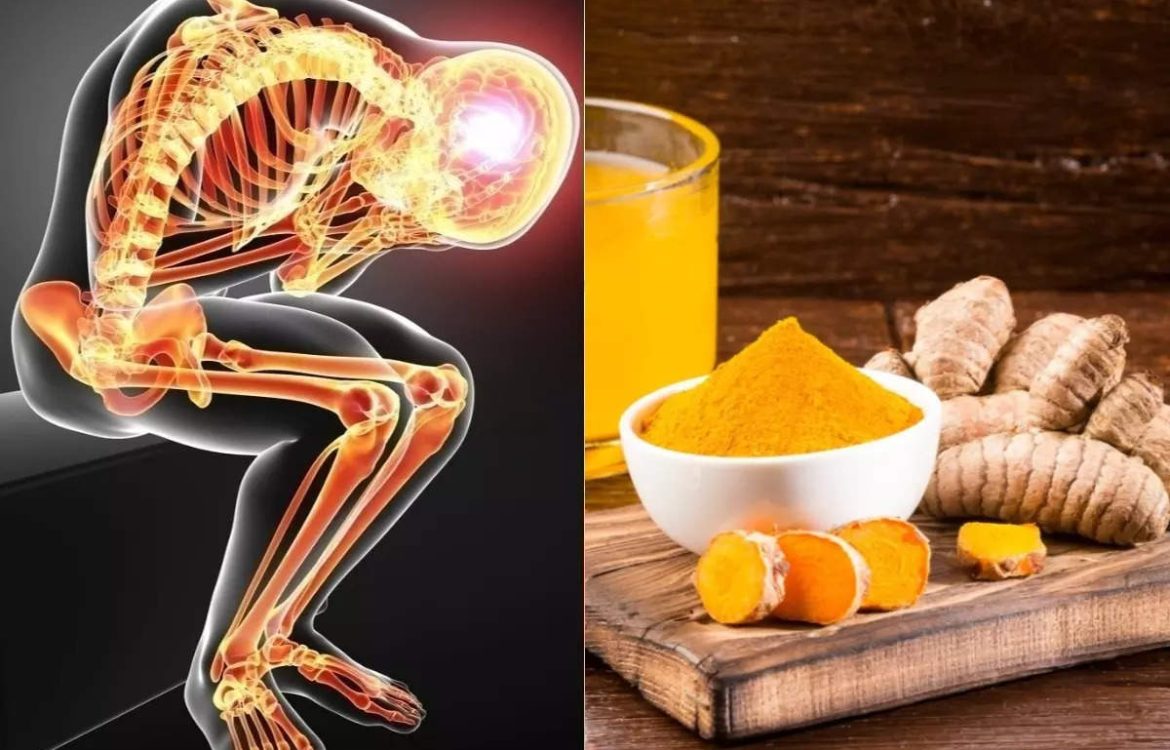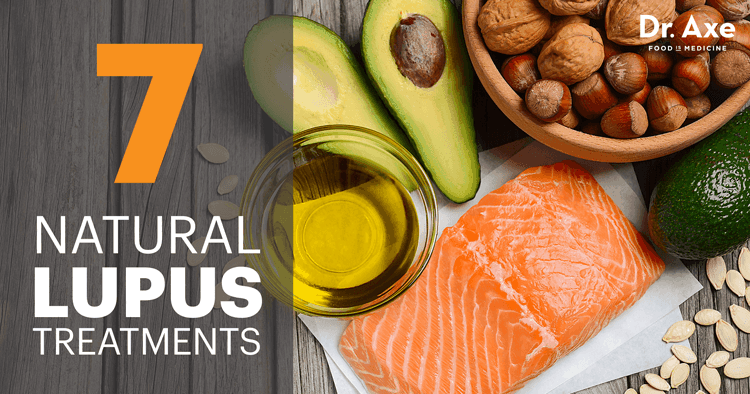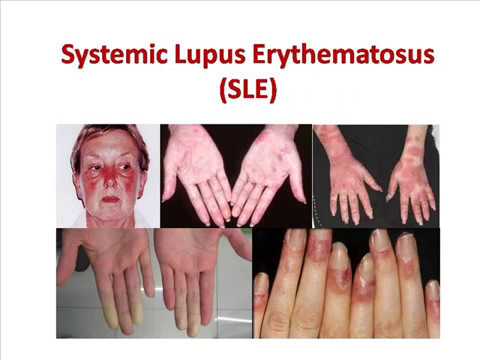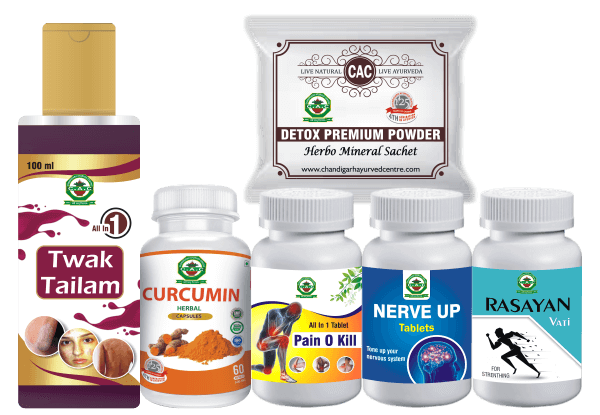Author Archives: Dr. Vaidya Karanvir Singh
How Ayurveda helps in Male Reproductive Health
- December 2, 2022
- Posted by Dr. Vaidya Karanvir Singh
- 0 Comment(s)
Male sexual Health: Male sexual dysfunction is becoming a common and serious health problem affecting men of all ages and it is increasing like fire in the forest. But many people don’t feel like talking about it. Male sexual health issues are arising due to physical and psychological stress which is increasing day by day. Around 30-40 % males are suffering from the sexual health problems. Our present day lifestyle such as bad eating habits, lack of physical exercise, increasing work stress, smoking, alcohol are contributing a lot in this.
Common sexual health issues men are dealing with:
- Lack of sexual desire or interest (low libido)
- Difficulty in physical arousal or excitement
- Absent or delayed ejaculation
- Erectile dysfunction
- Inability to control the timing of ejaculation
- Pain during intercourse
- Unable to reach climax
- Infertility
Factors contributing for increasing sexual health problems:
- Hormonal imbalance
- Diseases like diabetes, vascular, cardiac diseases, neurological disorders, kidney and liver failure
- Alcohol abuse
- Smoking
- Antidepressant drugs
- Work related stress and anxiety
- Depression
- Past traumas
- Obesity
- High blood pressure
- High cholesterol
What Ayurveda Say about male sexual health:
Ayurveda is a science of life and longetivity. It focuses on maintaining overall health by keeping body, mind and spirit in equilibrium. Male sexual health is defined separately by our acharyas in ancient text as “Vajikaran” or “Vrishya chikitsa” It is one of the eight major specialty among “Ashtanga Ayurveda”. Vajikaran is basically concerned with virility, aphrodisiacs, improving male health. The word vajikaran means horse vigor, particularly building an great sexual activity in an individuals.
Vajikaran Chikitsa involves various processes such as Sodhana (detoxification) through Panchkarma therapy involving Vaman (medicated emesis), Virechan (medicated purgation), Snehana (oleation therapy), Swedana (sudation). After sodhana depending upon the prakriti (vata, pitta and kapha) of the person certain herbal mineral preparations are given.
Vajikaran Rasayan (Rejuvuvination) is a special type of Rasayan therapy which improves the male reproductive health and improves sexual functions. These Rasayan Acts on the brain centres (hypothalamus and limbic system). These drugs has anti-stress and adaptogenic properties.
Herbs to enhance the male sexual Health:
- Ashwagandha (Withania somnifera): Ashwagandha has accepted the global acceptance to give best health benefits. It is used in various health issues including reproductive health. Ashwagandha is known to be an adaptogen. It increases the male sex drive, increases sperm mortality, increases the blood to the genitals and enhance overall reproductive health.
- Shatavari (Asparagus racemosus): This is counted as the most effective medicine to combat infertility. It is useful in balancing heat in the body and generating hostile environment for the formation of sperms. It also manages stress, anxiety, anger and irritability.
- Kapikacchu (Mucuna pruriens): It enhances the process of sperm formation and also increases the sperm mortality. It enhances the vitamins like A, C, E that are essential for the process of sperm formation. It is beneficial for male infertility
1. Safed Musli Roots (Asparagus): The dried roots of asparagus or safed musli has rejuvenating power on male reproductive health. It is aphrodiasic in nature.it combats the issue of premature ejaculation, improves sperm count, regular dose improves impotency.
2. Shilajit: Everyone knows about the magic of the drug shilajit. It is wonderful in enhancing sexual desires. It strengthens the muscles and empower the fatigue. It is the best herb for male reproductive health.
3. Methi seeds (Fenugreek): Methi seeds have various benefits such as reduce risk of diabetes, reduces inflammation, weight loss, enhances reproductive health. It increases the testosterone levels. It is proven to increase production and morphology of sperm. +
4. Gokshur (Tribulus terrestris): It is one of the best herb for enhancing male reproductive health. It improves sperm mortality and sperm count. It is also beneficial for the inflammation of genitals, low libido, erectile dysfunction and improves overall health of males.
Important tips:
– Relax and minimize stress
– Meditation to combat stress and anxiety
– Avoid alcohol and smoking
– Enough vitamin D to enhance testosterone levels
– Vitamin C to boost immune system (amla is the best source)
– Exercise daily to reduce stress hormone levels in the body
– Lead a healthy lifestyle
– Adequate sleep
– Overnight soaked nuts like almond, walnuts should be taken empty stomach early in the morning
– Stop steroidal intake
Managing Male Health with Chandigarh Ayurved Centre
Description
1. Detox Premium powder:
Detox premium powder is a herbo-mineral preparation containing ingredients such as jahar mohra pishti, parwal pishti, shukta pishti, shankh bhasma, kehrva pishti, moti bhasam, giloy satv, kamdudha ras, etc. This herbal powder help in overall detoxification of the body, balances pitta dosha in the body, reduces inflammation, pain, sudden pain, and improves the overall health of women, etc.
Recommended dosage: Take 1 sachet twice daily with normal water.
2. Men Power Plus tablet:
Mostly at one age men may suffer from low self-esteem and become negative. This also occurs because they are facing problems in their sexual life. There might be early ejaculation and erectile dysfunction. A feeling of inferiority also occurs and they feel hesitate to visit a doctor or discuss this problem. It also affects their relationship and leads to fighting, divorce, loss of self-confidence, the stress in their personal life.
If a person has difficulty in having and keeping an erection more than 25% of the time, its a time for consultation. Ayurveda offers a great solution to this problem.
Recommended Dosage: Take one tablet twice daily.
3. Nerve up tablet:
Nerve up tablet is a herbo-mineral tablet and is the purely ayurvedic formulation. CAC Nerve up tablets helps in balancing the Vata doshas. It reduces Kapha dosha, and acts as a nervine stimulant. It shows effective results in improving the central nervous system. It contains natural ingredients like shudha kuchala, shudha shilajeet, abhrak bhasma, praval pishti, shankh bhasma etc. These contain natural vatahar properties and helps in curing Vata diseases.
It acts as CNS stimulant: speed up physical and mental processes. Works in Erectile dysfunction, Body weakness, and Insomnia
Recommended Dosage: Take one tablet twice daily.
4. Kaunch Beej Capules:
Kaunch beej or Cowhage is widely known as “The magic velvet bean”. It is a leguminous plant and is a good source of protein. Kaunch beej increases sexual desire as well as the quality and quantity of sperm due to its aphrodisiac property. It helps in the management of nervous disorders like Parkinson’s diseases and controls the symptoms of arthritis. The most effective way of consuming Kaunch beej powder is with milk. It might also help reduce the risk of breast cancer[1-3]. External exposure to the hair of the Kaunch beej pod or the seed itself can cause severe itching, burning and rashes.
Recommended Dosage: Take one capsule twice daily.
5. Shilajit Satva:
Shilajeet of 10gm packing is a herbo mineral and purely ayurvedic formulation. It balances all the three doshas of your body but mainly works on Kapha dosha.
It is a blackish-brown powder or an exudate from mountain rocks found mainly in the Himalayas. It is an effective and safe supplement that has a positive effect on your overall health and well being. CAC Shilajit is available in the form of Shilajit Satva. It is a potent Immunity Booster and acts as an antioxidant, possesses anti-inflammatory properties. It has a tremendous effect on Male Harmones, Anaemia, Alziehmers disease, improves brain functions, Fatigueness, various Tumours and Cysts like PCOD in females. Due to its anti-inflammatory properties it works on inflamed lymph nodes as well. It balances blood sugar, increases absorption of nutrients, helps in detoxification, helps in reducing mood swings.
Recommended Dosage: Take 2 drops 2 time a day with milk.
6. Trikatu Syrup:
Trikatu Syrup is purely Ayurvedic formulation made up of three herbs. CAC Trikatu Syrup helps to eliminate excess Kapha or mucous from the body, supports respiratory system, manages weight, helps to take out impurities or ama from the body, supports healthy detoxification, reduces swelling. It shows anti-inflammatory, analgesic, expectorant, antioxidant properties. This syrup is made up of equal parts of three herbs such as Pippali (Piper longum), Shunthi (Zingiber officinale), & Marich (Piper nigrum) that maintains the metabolism in the body. The regular use of this syrup balances the thyroxine hormone and treats hyperthyroidism naturally. It is an Appetizer and it improves digestion, supports normal gastric function, and normal circulation.
Recommended Dosage: Take 2 tablespoon a day.
AYURVEDIC HERBS FOR TREATING DEMENTIA
- November 25, 2022
- Posted by Dr. Vaidya Karanvir Singh
- 0 Comment(s)
WHAT IS DEMENTIA?
Dementia is a medical term which is used for a group of symptoms including memory loss, difficulty in concentration and thinking. There is loss of cognitive functions to such an extent that it interferes in the daily life of an individual. It is basically a symptom which is caused by several diseases. It is more common in older people. It ranges from mild to severe stage. Alzheimer’s disease is one of the most common causes of dementia. It can be reversible depending on the cause. People with dementia often have difficulty in controlling their emotions. They develop mood swings, behavioral problems and difficulty in reasoning. The part of brain responsible for cognitive functions when affected with infection or any disease can lead to dementia.
When dementia is detected at early stage, it can be treated with certain medications and lifestyle changes. But when at severe stage, the chances of its reversible are bleak.
WHAT ARE THE DIFFERENT CAUSES OF DEMENTIA?
Dementia occurs because of the following reasons:
- Excessive build up of cerebrospinal fluid inside the brain
- Any brain infection
- Deficiency of vitamins in body
- Suffering from AIDS
- Syphilis
- Trauma to the brain
- Brain tumors
- Subdural hematomas
- Parkinson’s disease
- Certain medications like antidepressants, anti-seizure, anti-parkinson drugs, narcotic pain relievers, etc
SYMPTOMS OF DEMENTIA
The symptoms of dementia vary depending on the cause and the severity of it ranges from mild to severe. Following are the common signs and symptoms of dementia:
- Loss of memory
- Difficulty in communication
- Lack of judgement
- Difficulty in problem-solving
- Confusion
- Disorientation
- Problem in planning
- Difficulty in organizing tasks
- Behavioral problems
- Anxiety
- Stress
- Depression
- Irritation
- Hallucinations
HERBS FOR TREATING DEMENTIA
Some of the herbs which can be very helpful in treating dementia:
TURMERIC
Turmeric is one of the best herbs which is used for various ailments. It is having anti-inflammatory, antibacterial and antifungal properties. It helps in increasing immunity of body and thus fights infections. Dementia is often associated with inflammation of the brain and thus, regular consumption of turmeric in any of the form can be very helpful.
ASHWAGANDHA
Ashwagandha is another herb which is loaded with various medicinal properties. There is formation of beta-amyloid plaques in brain which leads to memory loss. Ashwagandha inhibits the formation of these plaques and helps in reducing oxidative stress in brain. Thus it can be helpful in curing dementia.
GINSENG
Ginseng contains anti-inflammatory chemicals called ginsenosides. These chemical ingredients help in reducing the formation of beta-amyloids in brain. This also reduces inflammation of brain and thus helps in treating dementia.
LEMON BALM
Lemon balm is a herb which is usually taken in the form of tea. It helps in improving cognitive functions such as memory, reasoning ability, etc. It also helps in treating anxiety, restlessness and insomnia. When taken regularly, it is very helpful in treating dementia.
SAGE
Sage is a herb which is known for its pungent smell. It helps in improving memory and other cognitive abilities. Alzheimer’s disease is the main reason of dementia. Sage inhibits the formation of enzyme acetylcholinesterase which breaks down the enzyme acetylcholine. Thus it can be very helpful for the treatment of dementia.
CHANDIGARH AYURVED CENTER’S MEDICATIONS FOR THE TREATMENT OF DEMENTIA
Here are some of the medications of Chandigarh ayurved center which are used for the treatment of dementia:
1. Nerve Plus tablet
These tablets shows Anti-bacterial, Anti-inflammatory, Antioxidant, and immune- modulator properties. It contains herbal ingredients Ghritkumari (Aloe barbadensis), Kali mirch (Piper nigrum), Giloy satav (Tinospora crdifolia), shudha kuchala, shudha shilajeet, shudha vatsnabh, shudh singraf. It is beneficial for erectile dysfunction, diseases of stomach, stimulating nerves and appetite, promotes the level of testosterone naturally.
Recommended Dosage– Take 1 tablet twice daily.
2. Brodley Syrup
This herbal syrup consist of ingredients like Shankhpushpi (Convolvulus pluricaulis), Brahmi (Bacopa monnieri), Yashti madhu (Glycyrrhiza glabra), Dhania (Coriandrum sativum), Jatamansi (Nardostachys jatamansi), Ashwagandha (Withania somnifera), Shatavari (Asparagus racemosus), Saunf (Foeniculum vulgare), etc that improves memory. Brodley syrup deal with the signs and symptoms related to Alzheimer patients.
Recommended Dosage: Take 2 teaspoonful twice daily.
3. Rasayan Vati
Rasayan vati is herbo-mineral Ayurvdic formulation which contains various herbs such as Aswagandha, Shilajeet, Amla, Kesar, Musali, Shatavar, Brahmi Abhrak Bhasam, Swarn Makshik Bhasam, Yashad Bhasam, Mukta pisti, Praval pisti, Jaiphal, Vang Bhasam, Aswagandha, Dalchini, Javitri, Gokhru, Kaunch Beej, Shilajeet, Saunth, Mirch, Pipli, Amla, Kesar, Manjith, Anant Mool, Brahmi, Musali, Shatavar, Swarn Vang, etc. These ingredients show antioxidant, anti-inflammatory, antipyretic, analgesic, immune-modulator properties. These tablets provides good results in General debility, Psychological disorders,
and improves immunity.
Recommended Dosage: Take 1 tablet twice daily.
4. Stress Care Tablet
Stress care tablet is an amazing combination of natural herbs like Sarpgandha, Brahmi, Tagar, jatamansi. It helps to relieve stress conditions. They help to pacify the nervous system and also helps to increase the mental and physical performance.
Recommended Dosage: Take 1 tablet twice daily.
5. Brain Relaxant Churna
This herbal churna is prepared from herb Atmagupta (Mucuna pruriens). The herb normalizes the nerve cell functions and supports brain function. It provides effective results in Alzheimer disease as it maintains the overall performance of the nervous system.
Recommended Dosage: Take 1 teaspoonful twice daily.
6. Immuno Up Powder
This powder is made up of the composition of bhasmas and pure herbs that is very beneficial in controlling the symptoms of Parkinson’s disease. The powder includes Giloy satav, Sutshekhar rasa, Sudhyog tablet, Shwet parpati, Shankh bhasma, Parwal pishti, etc. It is a very useful remedy to cure the voice change, uncontrollable movements during sleep, improve the rigid facial expression, etc.
Recommended Dosage: Take 1 sachet twice daily with normal water.
Ayurvedic Doctor from India Visiting United Kingdom for Consultation
- November 25, 2022
- Posted by Dr. Vaidya Karanvir Singh
- 0 Comment(s)
Vaidya Karanvir Singh is one of the best Ayurvedic Doctors from India and visiting London, England, United Kingdom for consultation. Hurry up and book your appointment now. Limited seats are available.
About India’s Best Ayurvedic Docter – Vaidya Karanvir Singh
Vaidya Karanvir Singh is the younger Vaidya in Chandigarh Ayurved & Panchakarma Centre. He is the fourth generation in his family who is practicing as a general consultant in Ayurved & Panchakarma treatment in Chandigarh. In his practice, he had treated more than 50,000 plus patients worldwide. He is a hard-working, soft-hearted, & good nature personality who doesn’t waste time even on Sunday. His OPD is seven days a week to provide the best services to the patients. Vaidya Karanvir Singh believes in helping as many patients as he can to give them a healthy life through Ayurveda.
He has been on various national/international TV channels for interviews and written articles for various health columns in international newspapers. He has presented papers and given lectures at various national and international forums and congresses and has a regular clinic in India. He also visits his distributors around the world for consultations, seminars, lectures, etc. In India, he offers free ayurvedic consultations to online patients.
Prevent and treat diseases and help as many people as possible by bringing them knowledge about nature, herbs, healing without medicines, and preventing diseases to occur by improving diet and lifestyle. Developing new herbal and Ayurvedic combinations to treat patients worldwide and adding better alternatives to current medicines, without producing more diseases and curing the existing ones.
Achievements
- Board of Ayurvedic and Unani Systems of Medicine, Govt. of Punjab is honored to confer the Dhanwantari Award to him.
- Chief Consultant of Panchkarma at Chandigarh Ayurveda and Panchkarma Centre
Aims & Objectives
Vaidya Karanvir Singh’s main aim is to provide a clear vision to the patient about their disease & treat them with pure Ayurvedic medicines.
In this view, Vaidya Karanvir Singh thinks that if you take proper Ayurvedic medicines along with the Panchakarma therapies you can see good, effective, & long-lasting results in a few days or a month.
Developing new herbal and ayurvedic combinations to treat different types of diseases, without producing a new one.
In clinical practice, Vaidya Karanvir Singh makes the diagnosis through “Nadi Pariksha”, “Saparshan Pariksha” the Prakarti of three doshas (Vata, Pitta, and Kapha) in a patient. According to that only a proper Ayurved treatment, panchakarma therapies, & diet is recommended to the patients.
Vaidya Karanvir Singh is providing pure classical preparation of the medicines made by the staff under his supervision. He is prescribing, Vati, Avleh, Asav-Arisht, Capsules, Rasayana Dravyas, Syrup, and Medicated Oil for proper treatment of various diseases
Vaidya Karanvir Singh is a renowned & one of the best Vaidya in Panchakarma at Tricity. His panchakarma is considered the best in Chandigarh.
Diseases On Which Vaidya Karanvir Singh Has an Expertise
1. Autoimmune Diseases
Autoimmune disease happens when the body’s natural defense system can’t tell the difference between your own cells and foreign cells, causing the body to mistakenly attack normal cells. Usually, the immune system can tell the difference between foreign cells and your own cells. In an autoimmune disease, the immune system mistakes parts of your body, like your joints or skin, as foreign. It releases proteins called autoantibodies that attack healthy cells.
Some autoimmune diseases treated by Vaidya Karanvir Singh are:-
- Systemic lupus erythematosus (SLE)
- Rheumatoid Arthritis
- Anchylosing Spondilytist
- Celiac Disease
- Type 1 Diabetes
- Sjögren’s Syndrome etc.
2. Stomach Disorders
Dr. Vaidya treated so many cases of stomach diseases some of them are mentioned below:-
- Ulcerative colitis
- Irritable bowel syndrome
- Gastro-esophageal reflux disease (GERD)
- Constipation
- Gastritis
3. Liver Disorders
Liver is the main organ of detoxification. In Chronic Liver disease, modern science recommends live transplantation. Ayurveda helps in this, without any transplantation. There are lots of herbs that are able to reverse the condition of the liver without causing any side effects. Dr. Vaidya treated lots of these kinds of cases that need transplantation and he do herbal treatment and Panchkarma for this to regain the capability of liver disease.
Some liver disease treated by Vaidya Karanvir Singh is mentioned below:-
- Hepatitis
- Fatty Liver
- Liver Cirrhosis
- Jaundice
- Portal Hypertension
4. Skin Diseases
Skin is the largest organ of the body. Skin diseases are similar to seen and difficult to treat. In severe conditions, strong medications like steroids and immunosuppressants are given by modern science that suppresses the symptoms but does not treat the cause of the disease. Dr. Vaidya expert to treat skin diseases without harming other system of the body.
Some skin diseases mention below treated by Vaidya Karanvir Singh:-
- Eczema
- Urticaria
- Psoriasis
- Freckles
- Acne
- Blemishes and Pigmentation
5. Joint Disorders
Joint disorders commonly affect people of any age. This problem hampers the daily activities and routine of many people. In allopathic treatment surgery is recommend to treat knee and spine issues but in Ayurveda such kind of treatment is not needed with the help of herbs and Panchkarma therapies the actual condition of knee and spine reverted.
Some joints diseases mention below treated by Vaidya Karanvir Singh:-
- Knee Pain
- Osteoarthritis
- Sciatica
- Back Pain
- Cervical Pain
6. Respiratory Disorders
A type of disease that affects the lungs and other parts of the respiratory system. Respiratory diseases may be caused by infection, by smoking tobacco, or by breathing in secondhand tobacco smoke, radon, asbestos, or other forms of air pollution. This condition more aggravated when season change or in winters. Ayurvedic herbs show best results in respiratory disorders increase immunity that fight against seasonal allergies. Dr. Vaidya treated so many cases like this with the help of ayurvedic herbs and Panchkarma therpies.
Some Respiratory diseases mention below treated by Vaidya Karanvir Singh:-
- Asthma
- Sarcoidosis
- Rhinitis
- Allergic Cough
- Sinusitis
- Chronic Obstructive Pulmonary Disease (COPD)
7. Lifestyle Disorder
Lifestyle diseases basically due to smoking, unhealthy diet, and physical inactivity — and result in the development of chronic diseases, specifically heart disease, stroke, diabetes, obesity, metabolic syndrome, eye diseases and thyroid. Dr. Vaidya treats all kind of lifestyle disorder which is the result of unhealthy and sedentary lifestyle. According to him these are not disease, these are associated symptoms of main problem occur in our body.
Some lifestyle disorders mention below treated by Vaidya Karanvir Singh:-
- Blood Pressure
- Diabetes
- Hair fall
- Obesity
- Thyroid
- Dry Eyes
8. Psychosomatic Disorders
Psychosomatic disorder is an illness that connects the mind and body. This occurs in such a way that the physiological functioning of the body is affected by the psychological tensions that either causes disease or worsen the pre-existing disease in a person. Ayurvedic herbs show wonderful results in psychosomatic disorders without any side effects.
Some psychosomatic disorders mention below treated by Vaidya Karanvir Singh:-
- Depression
- Insomnia
- Stress
- Anxiety
- Drug Addiction
9. Neurological Disorders
Disorders that affect the brain as well as the nerves found throughout the human body and the spinal cord. Neurological disorders are considered Vatavyaadhi, meaning health problems that are caused by an imbalance of Vata Dosha and disturb majja dhatu (bone marrow). Ayurvedic panchkarma therapies and herbs are best to treat neurological disorders.
Some neurological disorders mention below treated by Vaidya Karanvir Singh:-
- Numbness
- Epilepsy
- Migraine
- Trigeminal Neuralgia
- Alzheimer Disease
10. Urological Disorder
All urological disorders related to the filtering and carrying of urine out of the body. These diseases can affect men, women, and children of all ages. Ayurvedic herbs like kanchnaar guggul, gokshura, punernava, kalmi chora and sahijan chhal do best to revive the normal condition of urinary system.
Some urological disorders mention below treated by Vaidya Karanvir Singh:-
- Renal Stone
- Chronic Kidney Disease
- Hydronephrosis
- Prostatomegaly
- Urinary Tract Infection
11. Women’s Health Issues
Women’s health is a broad term referring to physical and mental health problems. Women’s health is often defined in terms of reproductive health and safety for younger women and in terms of diseases that appear in the female reproductive organs. In today era, many women and girls face lots of health issues related to their hormones irregularity to infertility. These females issues treated symptomatically in allopath but Ayurveda treat root of the disease that interfere in women health.
Some Women health problems mention below treated by Vaidya Karanvir Singh:
- PCOD
- Endometriosis
- Uterine Fibroid
- Leucorrhea
- Abnormal menses
- Menopause
12. Men’s Health Issues
Many of the major health risks that men face can be prevented with the help of Ayurvda. Ayurvedic panchkarma and herbs help in body detoxification, keep mind and body relax, maintain hormone balance, make life healthy with this regular exercise, a healthy diet, not smoking, stress reduction, and stop alcohol consumption helps to men to come back their normal health.
Some Men health problems mention below treated by Vaidya Karanvir Singh:-
- Azoospermia
- Erectile Dysfunction
- Genital Herpes
- Varicocele
- Premature Ejaculation
Ayurvedic Treatment in the United Kingdom
Ayurveda is experiencing a global resurgence and is increasingly recognized as the oldest and most intelligent system of healing known to man. Ayurveda is best in all aspective many people seeking for ayurvedic treatment but they don’t get proper ayurvedic treatment for their health issues like autoimmune disorders, skin diseases, ulcerative colitis, irritable bowel disease and avascular necrosis, etc.
Ayurveda is 5000 years old Indian traditional treatment. The power of Ayurveda is still not known in many areas. Ayurveda is capable to treat all the diseases which are non- curable in others pathies like systemic lupus erythematous (SLE), Liver cirrhosis, urticarial, eczema, lumbar spondylitis, appendicitis, tinnitus, trigeminal neuralgia, crohn’s disease and celiac disease etc.
Ayurvedic treatment is bases upon Dosha, Dhatus and Mala and diagnosis make on the basis of Nadi Priksha, Darshan Priksha or Sparshan Priksha.
Due to lack of proper research in the field of Ayurveda people take it secondary option for treatment. They just follow home remedies and believe that this kind of remedies is Ayurvedic treatment.
There are some myths about Ayurveda that:-
- It takes longer to work
- Ayurveda means a strict vegetarian diet
- Ayurveda is an outdated system
- Ayurvedic treatment does not need a doctor
To resolve this puzzle and confusion Dr. Vaidya Karanvir Singh visiting London to spread awareness among people for Ayurveda. He is well establishing in his field and always does ayurvedic practices and treatment. He helps their patient to overcome their health issues with natural herbal treatment. He treat root of the disease rather than symptoms and works to increase body immunity natural because immunity is the main factor that fight against many kind of diseases. If people have strong immune system, they are self-capable to fight with diseases.
SOURCES OF KETO DIET
- November 25, 2022
- Posted by Dr. Vaidya Karanvir Singh
- 0 Comment(s)
WHAT IS KETO DIET?
Ketogenic diet is a diet which is very low in carbohydrates and rich in fats and proteins. It is very popular now-a-days as keto diet. It leads to drastic reduction of carbohydrates in body and usage of fat causing weight loss. The metabolism of fat increases and fats are converted into ketone bodies. This process is knows as ketosis. The fats are converted into ketones in liver and energy is supplied to the brain. The foods which contain large amounts of carbohydrates such as sugar, white bread, soda, pastries, etc. are avoided. Ketogenic diets significantly reduce blood sugar and insulin levels in blood. Earlier, this diet was used for the treatment of diabetes.
Paleo, South Beach and Dukan diets are other low-carb diets which are rich in high protein but moderate in fat content. However, keto diet consists of high amount of fat, typically 70% to 80% and moderate amount of protein. It has benefits for various health disorders like diabetes, cancer, alzheimer’s disease, epilepsy, etc.
WHAT IS THE MECHANISM OF WORKING OF KETO DIET?
In ketogenic diet, there is very less intake of carbohydrates and the body gets deprived of glucose. Glucose is the main source of energy for all the cells in the body. Brain requires glucose in a constant manner. Near about 120 grams of glucose is required daily by the brain as it cannot store glucose. When a person does fasting or very low amount of sugar is present in blood, the body pulls glucose from the liver and temporarily breaks down muscle to release glucose. This happens during first 3 to 4 days and the stored glucose is fully depleted. The amount of insulin hormone also decreases. At this time, body starts using fat for energy production. This leads to production of ketone bodies in body and thus leads to ketosis.
In ketogenic diet, the glucose intake is reduced and body starts using fat as an energy source. During fasting and strenuous exercise, mild ketosis is experienced. The diet should be carefully followed and level of ketone bodies should be maintained upto a certain level.
WHAT ARE THE VEGETARIAN SOURCES OF FOOD FOR KETO DIET?
Some of the vegan foods which can be consumed for following keto diet:
- Vegetables such as cauliflower, asparagus, zucchini, broccoli, cabbage, sprouts, kale, bell peppers, mushrooms, spinach, lettuce, etc
- Nuts like almonds, walnuts, pistachios, hazelnuts, pecans, cashews
- Dairy products like cottage cheese, yogurt, butter
- Berries such as strawberries, blackberries and raspberries
- Oils like coconut oil, olive oil, avocado oil
- Seeds such as flax seeds, chia seeds, hemp seeds, pumpkin seeds
- Butters like peanut butter, almond butter, hazelnut butter
- Protein foods like tempeh, spirulina, natto, nutritional yeast
- Herbs used for seasoning like basil, pepper, turmeric, oregano, thyme, salt, rosemary
WHAT FOODS ARE TO BE AVOIDED DURING VEGETARIAN KETO DIET?
When a person is on vegetarian keto diet, he should limit the intake of following foods:
- Different varieties of meat such as beef, pork, lamb, goat
- Poultry like chicken, turkey, duck, goose
- Fish such as salmon, tuna, lobster, sardines, anchovies
- High carb foods like legumes, grains, fruits, potatoes, sweet potatoes, carrots
- Sweetened beverages such as soda, sweet tea, juice, energy drinks
- Grains such as rice, quinoa, oats, millets, rye, barley, pasta, bread
- Legumes like peas, beans, lentils, chickpeas
- Processed foods such as granola, chips, cookies, baked goods, breakfast cereals
- Condiments like honey mustard, ketchup, marinades, barbecue sauce, sweetened salad dressings
- Sweeteners such as white and brown sugar, honey, maple syrup
- Alcoholic beverages like beer, wine, sweet cocktails
WHAT ARE THE BENEFITS OF VEGETARIAN KETO DIET?
When a person follows keto diet, he or she will have the following benefits:
- Helps in decreasing in body weight
- As it lowers the blood cholesterol level, it prevents atherosclerosis and thus promotes heart health, lowers high blood pressure, etc
- Carbohydrates can lead to a skin condition called acne. In keto diet, the intake of carbohydrates is decreased and there are decreased levels of insulin in blood. This prevents acne.
- It helps in keeping blood sugar level at low level.
- The diet has been used since ancient times for the treatment of epilepsy as it helps in controlling seizures.
- It helps in strengthening of brain, spinal cord and nerves. It is thus beneficial for various nervous disorders like parkinson’s disease, alzheimer’s disease.
- As it helps in losing weight, it is beneficial for patients suffering from polycystic ovarian syndrome.
PINK EYE
- November 25, 2022
- Posted by Dr. Vaidya Karanvir Singh
- 0 Comment(s)
WHAT IS PINK EYE?
Pink eye is also known as conjunctivitis. It is an inflammation of the conjunctiva of the eye. Conjunctiva is the transparent outer membrane which lines the white part of eyeball and eyelids. It protects the eye from dirt and micro-organisms. There are present very fine blood vessels in it. When these blood vessels get inflamed, they become more visible. This condition is known as pink eye as the eye appears reddish or pink. The most common cause of pink eye is bacterial or viral infection or any kind of allergy. Children are more commonly affected.
Pink eye is contagious but it is not fatal. It rarely causes damage to the eye vision. It can be easily treated with medicines and by following certain precautions.
WHAT ARE THE CAUSES OF PINK EYE?
The common causes of pink eye are:
- Bacteria
- Virus
- Any allergy
- Entry of any foreign object in the eye
- Chemical splash in eye
- Blockage of tear duct
- Chemical irritants like smoke, shampoos, chlorine in swimming pool
- Fungi, parasites or amoeba
- Contact lenses
SYMPTOMS OF PINK EYE
The common signs and symptoms of pink eye are:
- Redness in one or both eyes
- Itching
- Gritty feeling in eyes
- Excessive watery discharge from eyes
- Crust formation over eyelids, especially after sleep
- Burning sensation in eyes
- Increased sensitivity to light
- Swelling of eyelids
HOW TO PREVENT ITS FURTHER SPREAD?
Pink eye can be prevented by following some of the following steps:
- Avoid touching eyes with hands
- Wash hands regularly
- Using a clean towel and wash cloth daily
- Don’t use eye cosmetics like mascara, kajal
- Do not eye cosmetics
- Change pillow covers regularly
HOW PINK EYE IS DIAGNOSED?
The doctor will do a proper eye examination of the patient. He will ask symptoms of the disease to the patient. He may perform some of the following tests to the patients:
- External eye tissue examination
- Vision test
- Examination of the inner eye
- Conjunctival tissue smear test
AYURVEDIC TREATMENT OF PINK EYE
Here are some of the medications of Chandigarh ayurved center which are used for the treatment of pink eye:
1. Triphala Guggulu
Triphala guggulu is a traditional Ayurvedic herbal formulation consisting of the dried fruits of three medicinal plants –Haritaki (Terminalia chebula), Amalaki (Emblica officinalis), and Bibhitaki (Terminalia bellirica). Triphala can correct the imbalance of doshas as well as bring them to normalcy along with a specific vision promoting effect. It helps in the conjunctivitis. Triphala is very beneficial for the improvement of eye vision, relieves the headache, eye strain, burning sensation in the eyes etc.
Recommended Dosage– Take 1 tablet twice a day with normal water
2. Detox Premium Powder
The powder contains a combination of natural and pure herbs which is the best remedy for the treatment of all eye problems. This mixture contains ingredients such as – Tal sindoor, Gandhak rasayan, Akik pishti, Jahar mohra, Moti pishti. The powder is used for the treatment of eye floaters and eye infections. It helps to treat cloudy vision, blurred vision, difficulty in seeing in the dark, fuzzy spots etc.
Recommended Dosage–Take 1 sachet twice a day with normal water.
3. Amrit Tulsi Ras
This herbal preparation is in drops form prepared from five types of Tulsi. Shama Tulsi (Ocimum sanctum), Rama Tulsi (Ocimum gratissimum), Kapoor Tulsi (Ocimum canum), Shwet Tulsi (Ocimum basilicum), Nimba Tulsi (Ocimum citriodorum) that provides good result in all allergic reactions. This is effective in Dry eye, eye infection and conjunctivitis.
Recommended Dosage –Take two to three drops twice daily.
4. Roshani Eye drops
Roshani eye drop is pure Ayurvedic formulation used in problems like frequent travel, work on a computer, and lack of sleep. This eye drops contains herbal ingredients like Nimba (Azadirachta indica), Bhringraj (Eclipta alba), Punarnava (Boerhavia diffusa), Haritaki (Terminalia chebula), Shwet Chandan, Rakta chandan, Tulsi (Ocimum sanctum), Haridra( Curcuma longa), Gulab (Rosa damascena), Adrak (Zingiber officinale), Bahera (Terminalia bellirica), Pudina (Mentha spicata), Saindhavan lavan, Phitakari, etc. This eye drop soothes up the eyes, prevents infections and clears off particles in the eyes, improves vision. This eye drop is beneficial in diseases like conjunctivitis, double vision, night blindness, cataract or glaucoma, etc.
Recommended Dosage– put one drop in each eye in the morning and at bed time.
BASTI KARMA IN AYURVEDA
- November 24, 2022
- Posted by Dr. Vaidya Karanvir Singh
- 0 Comment(s)
Understanding Basti Karma:
Human body comprises of three body elements (doshas) such as Vata, pitta and Kapha. Imbalnce of any of these dosha is the root cause of all the diseases in the body. Hence these has to in a balnced state of mind. Ayurved Acharyas has mentioned 5 karmas known as Panchkarmas for sodhana chikitsa (biocleansing) those are Vaman (therapeutic emesis) to balance kapha , Virechan (therapeutic purgation) to balance pitta , Basti (medicated emesis) to balance vata, nasya (nasal therapy) and raktamokhan to balance rakta (bloodletting).
Basti karma is administeration of herbal decoction or medicated oil through anal route or urethral route. Basti is often misconcepted with nomal enema that it is used to clear bowel and relieve constipation. According to Ayurveda classics Basti has therapeutic action on rejuvenation of all the body tissues, prevents various diseases, increasing longitivity and restores health. Basti is the best therapy to restore aggravated vata inside the body and restores its normal flow.
Acharya charak has mentioned Basti as Ardha Chikitsa that is half treatment for management of all diseases.
Benefits of Basti karma:
“बस्तिर्वयःस्थापयिता सुखायुर्बलाग्निमेधास्वरवर्णकृच्च|
सर्वार्थकारी शिशुवृद्धयूनां निरत्ययः सर्वगदापहश्च||
विट्श्लेष्मपित्तानिलमूत्रकर्षी दार्ढ्यावहः शुक्रबलप्रदश्च|
विश्वक्स्थितं दोषचयं निरस्य सर्वान् विकारान् शमयेन्निरूहः||”
(charak siddhi sthan)
- Basti prevents aging
- Promotes happiness, longevity, strength, power of digestion, intelligence, voice and complexion.
- Accomplishes all objects
- Harmless to children , old and youth
- Evacuates feces, Kapha, pitta, vata and urine in sequence
- Promotes sturdiness of the body
- Enriches semen and promotes strength
- It cures all the disease causing doshas (toxins) accumulated inside the body
Types of Basti Chikista:
There are mainly three types of bastis :
- Niruha Basti (asthapan Basti ): It is prepared with the decoction of herbs with other ingredients like honey, salt, lipid. Niruh word itself signifies to eliminate morbid doshas.
- Anuvasan Basti (Sneha Basti): This basti is prepared with medicated ghee, oil, lipids. Anuvasan word signifies “to stay” that means administered Basti stays inside body for longer duration without causing any harm.
- Uttar Basti : Administration of Ghee, medicated oil or decoction into female uterus through vaginal route or in males through urethral route. It is
Beneficial for the strengthen reproductive system.
Mode of Action of Basti Chikitsa:
“बलदोषकालरोगप्रकृतीः प्रविभज्य योजिताः सम्यक्
स्वैः स्वैरौषधवर्गैः स्वान् स्वान् रोगान्नियच्छन्ति||
कर्मान्यद्बस्तिसमं न विद्यते शीघ्रसुखविशोधित्वात्|
आश्वपतर्पणतर्पणयोगाच्च निरत्ययत्वाच्च||”
Ayurveda mentioned Vata as the most significant dosha inside the body whose tendency is to flow but when vata dosha gets imbalanced in the body it causes major health issues. Imabalnce of vata dosha interferes with the functioning of the body. Basti helps in the removal of toxins and waste materials from the system. Basti attract the toxins from whole body into large intestine (pakvashya) which is the focal point of vata and cleanses the area. It helps to eliminate morbid toxins and provide nourishment to the body. The drugs and herbs in the Basti is getting absorbed and have it therapeutic action on various conditions like Rheumatoid arthritis, autoimmune disorders, PCOD, Sensory dysfunction, hemiplegia, atrophy of nerves and vessel etc.
Basti according to Doshas:
- Vata Dosha: Madhur and amla rasa Pradhan herbs like Dashmool, Ashwagandha etc
- Pitta Dosha: Tikta And Madhur rasa Pradhan Herbs like neem, vasa, chandan, Manjistha etc.
- Kapha Dosha: Kashaya rasa pradhan herbs like Trikatu, pippali, punarnava etc.
Administeration of Basti:
- Best time to administer Basti is early morning or evening specially in that time of the days when Vata dosha at its peak.
- The Basti is given empty stomach, there is gap of at least 3-4 hours after meals but Anuvasan Basti Or Oil enema can be given emty Stomach
- The ares where Basti is given should be clean, warm comfortable and toilet is nearby to that room
- The material used in the basti like Basti Netra, enema bag, measuring cups, towels etc should be sterilized.
- Basti is given in Left lateral position
- Basti is having maximum benefits if retained for longer time in the intestine (for about 45 min)
Indications of Basti Chikitsa:
- Paralysis of one or whole limb (ekaang roga or sarvaang roga)
- Retention of vata dosha, feces, urine, semen
- Decreasing strength (Bala khshaya)
- Parasitic manifestation of intestine (krimikostha)
- Shool (colic pain)
- Psin, atrophy and stiffness of whole body
- Diarrhea without association of Ama
- Fistula in ano
- Tearing pain in joints due to RA, Gout, Arthritis
- Skin disorders like psoriasis, eczema
- Strengthening reproductive system and improves fertility
- Anuvasan Basti is helpful in combating dryness in the body, improves digestion, and person suffering from vata roga
Contraindication of Basti Chikitsa:
- Indigestion ( Ajeerna)
- Weak digestive power
- Person who is excessively weak and emaciated
- Person who is hungry and thirsty
- Person who has feeling of fear and anger
- Dyspnea
- Cold and cough
- Diseases like ascites, intestinal perforation, intestinal obstruction, Diabetes etc.
- Anuvasan Basti is contraindicated in Acute fever, anorexia, jaundice, anemia, intestinal parasites etc
Importance of Cow Ghee in Everyday Life
- November 24, 2022
- Posted by Dr. Vaidya Karanvir Singh
- 0 Comment(s)
What Ayurveda say about cow ghee?
Ghee is a magical golden liquid which is formed by the milk of cows that have been grazed in healthy and natural environment. It is popularly known as ” Ghrita” in Sanskrit which is prepared by constant heating of unsalted butter till it gets separated into three components that is fat and milk protein and sugar (lactose). In every Indian home ghee is mandatory to be present.
Ghee symbolizes “ energy” or “prana” (universal life force). Satvik food is a symbol of harmony and peace in nature which enhances Agni (digestive fire), sharirik bala (physical strength), provides us healthy mind and longevity. Moreover, the word “Ghrita” refers to as a substance which shines, provides radiance to the body and mind.
Ghrita as a medicine:
- Cow ghee has been a tremendous base for Ayurvedic formulations since it has ability deeper penetration into each and every cells and tissues of the body.
- This is also called as clarified butter. It is an excellent Anupama (vehicle) for various Ayurvedic medicines. It facilitates proper absorption and digestion of therapeutic formulations.
- It is helpful in enhancing the AGNI (digestive power) and aids in digestion and assimilation process.
- Cow ghee is considered as Rasayana (rejuvenation) that provides good health, vitality and longitivity.
- As the Cow ghee ages its effectiveness and healing properties enhances.
- Goghrita is the best source to pacify vata dosha. It can be used internally and externally.
- Consuming ghee regularly can facilitate the detoxification of Ama (toxins) out of the body through the gut.
- Goghrita acts as fuel for dhi (intelligence), dhriti (acts with firmness), Smriti (memory) and buddhi (intellect).
Benefits of cow ghee:
- Goghrita helps in magically repairing and rejuvenating lining of the stomach and ultimately aids the process of digestion by providing lubrication.
सर्पिः स्नेहयति ||च.सू.२७\४||
- Ghee is the best way to balance aggravated pitta dosha (hot factor ) inside the body. In normal physiology afternoon is the time when pitta dosha is at its peak, this is best suited time to take ghee and preferably cow ghee.
- Aged cow ghee that is “Purana Ghrita”or “Mahaghrita” has been used in the curing various chronic diseases like neurological disorders, epilepsy and digestive disorders.
- Cow ghee is effective remedy for healing wounds, bruises, bones and various skin problems like eczema, psoriasis etc
- Ghee plays an important role in Panchakarma as Purva karma (pre therapy) as it is the first step to consume it daily in the morning time because it helps in dissolving Ama (toxins) present inside the body and enhance its elimination through the bowel.
- Abhyanga (oleation therapy) allows the deeper penetration of ghee into the tissues of limbs, head, and joints and other parts of body which initiates the secretion of endorphins. Abhyanga leads to strengthening tof immune system anddelays the process of aging.
- Aacharya Sushrut mentioned the benefits of cow ghee as conducive to rasa dhatu (essence of digested food), Sukra dhatu (semen), ojas (immunity). It has softening and cooling effect in the body. And it is beneficial for clarity of complexion and voice.
- Cow ghee nasya: every putting 2-4 drops of warm cow ghee in the nostrils helps to combat allergic rhinitis, migraine, sinusitis, greying of hairs, brings better sleep, calms mind, increase intelligence.
- Ghee Vasti (enema): Ghee enema is used to strengthen bones, balance excessive vata inside the body, useful in skin disorders.
- Ghee for fever: cow ghee improves the burning sensation that happens after fever but it is only to be used only after the fever is completely cured (probably after 10 days) to regain immunity and strength.
- As per Ashtanghridyam ghee is advised for new borne and lactating mother. It adds nourishment and fortifies the breast milk.
- Tarpan for eye: In various eye disorders like dry eye, retro orbital pain, watery eye etc ghee is use as tarpan to strengthen it. Ghee used is simply cow ghee or else it is fortified with herbs like amla, triphla etc to get maximum benefits.
- Shatdhauta grita: As special procedure in which cow ghee is washed 100 times. Shaudhaut ghrita is having medicinal properties is beneficial for pregnant women, wounds and burns, reduce heat an d calms pitta.it is an excellent moisturizer.
- It strengthens the memory, wisdom, nourishment and add luster to body.
- For spiritual purpose ghee is used in fumigation with other useful herbs.
- Oil pulling (kaval/ gandhoosh): Gargling with cow ghee helps to heal oral ulcers, relieve burning sensation, indicated in pitta balance.
Contraindications of Ghee:
- Ama (indigestion or toxins)
- Ongoing Fever
- Jaundice (kamla)
- Hepatitis
- Diarrhea
- Pregnant women suffering from cold
Anti-inflammation and Ayurveda
- November 24, 2022
- Posted by Dr. Vaidya Karanvir Singh
- 0 Comment(s)
What is Inflammation?
When a person encounters any injury, microbial agents like Bacteria, viruses or any toxic substance, it activates immune system. Immune system send chemical mediators, inflammatory cells, cytokines and they begin to tap microbes and starts the healing process. This is considered as body’s natural defense mechanism. The result can be severe pain, swelling, or redness. But very importantly inflammation also affects body systems that a person not able to see with naked eyes. Inflammation can be acute or chronic:
- Acute inflammation: it is a quick response for damage to body such as cutting your finger. To heal the cut, body sends inflammatory cells in the place of injury. And hence healing process starts.
- Chronic inflammation: Body continues to send inflammatory cells even when there is no outside danger. In case rheumatoid arthritis inflammatory cells and their constituent attack joint tissues that causes inflammation that reoccurs and leads to severe damage to joints causing pain and deformities.
Symptoms of Inflammation :
- Redness
- A swollen joint that may be warm to the touch
- Joint pain
- Joint stiffness
- A joint that doesn’t work
- Fever
- Chills
- Fatigue and loss of energy
- Headaches
- Loss of appetite
- Muscle stiffness
Ayurveda concept behind inflammation:
“बाह्याः सिराः प्राप्य यदा कफासृक्पित्तानि सन्दूषयतीह वायुः|
तैर्बद्धमार्गः स तदा विसर्पन्नुत्सेधलिङ्गं श्वयथुं करोति||
उरःस्थितैरूर्ध्वमधस्तु [१] वायोः स्थानस्थितैर्मध्यगतैस्तु मध्ये|
सर्वाङ्गगः सर्वगतैः क्वचित्स्थैर्दोषैः क्वचित् स्याच्छ्वयथुस्तदाख्यः||”
Aggravated excessive pitta, kapha and rakta at site of peripheral superficial vessels obstruct the natural flow of vata dosha. Vitiated Vata spread to different places leads to swelling which is its cardinal symptom. Where ever vata lodges it shows its symptoms like if lodges in chest causes inflammation of upper part and vice versa.
Prodromal symptoms as per Ayurveda:
“ऊष्मा तथा स्याद्दवथुः सिराणामायाम इत्येव च पूर्वरूपम्|”
- Rise in temperature
- Burning sensation as if burnt by fire
- Dilation of vessels (swelling)
General symptoms of Inflammation:
“सगौरवं स्यादनवस्थितत्वं सोत्सेधमुष्माऽथ सिरातनुत्वम्|
सलोमहर्षाऽङ्गविवर्णता च सामान्यलिङ्गं श्वयथोः प्रदिष्टम्||”
- Heaviness
- Movability
- Bulging
- Heat
- thinning of the vessels
- discoloration of the affected skin
Natural ways to overcome Inflammation with herbs:
- Turmeric (Curcuma longa): Curcumin present in turmeric is a powerful anti-inflammatory, anti-carcinogenic and hepatoprotective spice.Turmeric is a potent herb in managing inflammation. Studies shows that its active ingredient inhibits the action of inflammatory agents.
- Ashwagandha (Withania Somnifera): Ashwagandha is an potent Ayurvedic Rasayan (rejuvenating tonic) that enhance longitivity. Clinical studies shows that it relieve the pain in rheumatoid arthritis patients. It is the best alternative to steroids.
- Ginger (Zingiber Officinale): Ginger is a potent anti-inflammatory and antioxidant agent. It is clinically proven that it reduces pain, swelling, reduce morning stiffness and increase joint mobility in RA patients.
- Guggul (Comiphora mukul): In Ayurveda guggul has long been used to manage inflammatory conditions like OA, RA and psoriatic arthritis. It is powerful anti-inflammatory, antioxidant properties. It is proven that 500 mg of guggul thrice a day possibly reduces the inflammatory symptom slik pain, swelling etc.
- Gotu kola (Centella asiatica): Gotu kola is known as “the herb of longitivity”. It is an Anti-inflammatory herbs that helps in reducing inflammatory symptoms like pain, swelling etc.
Management of inflammation by Chandigarh Ayurved Centre:
CAC CURCUMIN CAPSULE is a herbo-mineral capsule of size 500 MG which is 100% safe and is purely ayurvedic formulation. CAC Curcumin Capsules helps in pacifying all three doshas. This Capsule contains standardized extract of the herb Curcumin (Curcuma longa). Curcumin is the active ingredient in Turmeric having powerful Anti-inflammatory, Antibacterial, Antifungal, Anti-microbial and Antioxidant properties. These Capsules lowers the risk of Heart Attack, prevents Cancer by reducing the growth of cancerous cells, Rheumatoid arthritis These Capsules are very popular Anti-aging supplement.
CAC Ashwagandha Capsule is an herbal and purely ayurvedic formulation. Ashwagandha has been called the kings of Ayurvedic herbs. Its root has a horsey smell. It boosts your immune system and relieves stress. It is made from the goodness of Ashwagandha also known as Indian ginseng. It helps you recover from anxiety and depression, boost your brain. It may also modestly enhance strength performance, improve glucose metabolism, increase testosterone levels It is a good antioxidant, anti-inflammatory, anti-diabetic, anti-cancer and anti-stress properties.
CAC Pain o kill tablet is ayurvedic and purely herbal formulation. It help to relax your muscles and muscles cramps thus relieving pain. It balances all the three doshas of your body thus maintaining proper blood circulation. It provides soothing effect to the affected area of pain. It contains various herbs like Jivanti, Musta, Usher, Bilwa, Shatavri and Kantakari. All these herbs are natural pain relievers.
Ingredients of Pain O kill tablet
Each tablet of Pain O kill contains
- Jaiphal (Myristica fragrans)
- Shallaki (Boswellia serrata)
- Shudh Guggulu (Commiphora mukul)
- Shigru (Moringa oleifera)
- Nirgundi (Vitex negundo)
- Vatsanabh shudh (Aconitum ferox)
- Shudh hingul (Ferula narthex)
Uses of pain o kill tablet:
- Knee pain
- Rheumatoid arthritis
- Backache
- Cervical spondylitis
- Osteoarthritis
Some Herbs for SLE
- November 22, 2022
- Posted by Dr. Vaidya Karanvir Singh
- 0 Comment(s)
What is SLE:
SLE stand for systemic lupus Erythematosis. Lupus is an chronic auto immune disorder in which healthy tissues are attacked by body’s immune system resulting in persistence inflammation, affecting multiple organs of the body like joints, kidney, heart, brain, endocrine glands. Women are often much affected then men. Lupus is quite irritating disorder and reduce the quality of life of a person. Imflammation of different organs is commonly associated with lupus.
Causes:
- Stress
- Trauma
- Environmental factors
- Genetics also plays a major role
- Hormonal factors
- Ultra violet rays of sunlight
- Smoking
Sign and Symptoms:
- Butterfly shaped rashes on face
- Fatigue
- Loss of appetite
- Weight loss
- Mouth ulcers
- Hair loss
- Joint pain, tender and swelling
- Sensitivity to sun
- fever
Ayurveda’s point of view regarding SLE:
Ayurveda concept behind Systemic Lupus Erythematosis is reduction in Vyadhikhashmatva (decrease in immunity). Here predominant dosha vata and pitta gets vitiated and that lead to improper formation of Dhatus (tissues). And as a result ojas (resisting power or immunity) is also decreased. And one other thing is concept of Agni (disgestive fire) which gets vitiated by the excessive doshas leads to interruption in the formation of Dhatus and blocking of the micro channels (srotas).
The treatment protocol in Ayurveda for SLE involves:
- Agni vardhan (increasing digestive fire)
- Panchkarma and sodhana (detoxification therapy)
- Oja vardhan herbs ( herbs that increase immunity)
- Rsayana therapy (rejuvenation)
Some important herbs for SLE:
- Turmeric (Curcumin): The active ingredient curcumin in Turmeric helps fights against auto immune disease like Lupus. curcumin is an anti-inflammatory agent that helpsin reducing swelling, pain, tenderness. Boil a teaspoon full of turmeric in a glass of a milk for 5 minutes and strain the milk and drink it.
- Ginger: ginger is a powerful home remedy to combat lupus. Ginger has anti-inflammatory and antioxidant properties helsp in reducing swelling and pain in the joint. Drink ginger tear or add ginger into your diet.
- Tulsi (Holy Basil): The primary cause of Lupus is stress. Tulsi is rich in antioxidant and anti-inflammatory properties. It also helps in fighting against infections, removes stress, increase immunity etc. A Cup of herbal tea enriched with Tulsi twice or thrice a day is effective or one can simply chew tulsi leaves.
- Giloy (Guduchi): Guduchi is the potent herbal drug for the management of SLE. It has anti-inflammatory properties and a good immunomodulator helps in making immune system strong. It also helps in removing toxin from the body. Giloy is also considered as a potent Rasyanic herb.
- Flax seeds: flax seeds are rich in omega 3 fatty acids. Omega 3 is the best source to reduce inflammation in lupus. It improves kidney function in lupus patient. Near about 30 gram of flax seeds are required in a day.
- Aloe Vera: Aloe vera has antioxidant, anti-inflammatory, analgesic, immuno-modulator properties of the herb used in it deals with all signs & symptoms related to SLE patients. Take 20ml juice with equal amount of water twice daily.
Better manangement of Systemic Lupus Erythematosis (SLE) with Ayurveda
- November 22, 2022
- Posted by Dr. Vaidya Karanvir Singh
- 0 Comment(s)
Understanding SLE: Systemic Lupus Erythematosis is a chronic inflammatory condition which is autoimmune and affects multiple organs of the body. Normally our immune system is built to fight against infection causing diseases but while talking about autoimmune disorder immune system fight against our own system called as self attack. SLE is a long term inflammatory condition degrade the quality of life. Women are more suffered than men. SLE belongs to the family of autoimmune rheumatic disorders characterized by joint disorder, skin rashes and lesion, nervous system disorder, altered mucus membrane. Various symptoms overlap each other. Mostly Vasculitis overlaps SLE.
Risk Factors involves:
- Genetic
- Exposure to sunlight (ultra violet radiations)
- Certain bacterial and viral infections
- Prolong use of certain medications
- Environmental conditions
- Certain eating habits
- Physical and mental stress
Ayurveda and Systemic Lupus Erythmatosis:
Ayurveda revolves around theory of Doshas (body humours), dhatu (body tissues) and Agni (digestive fire). There are 3 doshas vata, pitta and kapha and 7 types of dhatus Rasa (plasma), Rakta (blood tissue), mansa (muscles), meda (fatty tissues), asthi (bones), maja (bone marrow) and shukras (semen) and when all the dhatus are formed completely it give rise to ojas (immunity) formation. When we talk about SLE there is vitiation of Vata dosha, pitta dosha and rakta dhatu that leads to unhealthy tissue formation and at the end the ojas formation is hampered.
Pathogenesis of SLE according to Ayurveda:
Nidan (causative factors): Excessive intake of Katu rasa and Lavana rasa , ratri jagran (waking up late at night)
Dosha dushti:
- Vata- pain in joint, legs, shoulders, blackish discolouration, altered sleep
- Pitta- fever, burning sensation
Dhatu Dhusti:
- Rasa Dhatu- Fever
- Rakta Dhatu- reddish skin lesion, blackish discoloration, itching and ulceration
- Maamsa Dhatu- Blakish discoloration, fatigue, weakness
- Asthi Dhatu- involvement of joints
AGNI:
- Agni mandya (weak digestive fire)
Poorva rupa (prodromal symptoms):
- Intermittent joint pain
- reddishness over face
Rupa (Symptoms):
- Joint pain
- skin lesions
- fever
- pain in lower limbs
Vyadhi vinichya (diagnosis)– Vata rakta
Presentation of the patient With Systemic Lupus Erythematosus
A middle aged patient usually female present with the symptoms like
- Burning sensation in both the legs
- Pain in muscles
- Pain in multiple joints like wrist, elbow, shoulder
- Pain in lower limb
- Increased pain on walking
- Joints are stiff, swollen
- Reddish rashes over face and neck (butterfly rashes)
- Discoloration of the skin especially over toes which turns darker
- Disturbed menses
- Altered sleep cycle
- Shortness of breathe
- Chest pain
- Loss of appetite
- Fever
- Confusion, memory loss, headache
- Fatigue and weakness
- Irregular heart beat
Complications of SLE
- Stroke
- Heart attack
- Cataract
- Deformed joints
- Skin scarring
- Kidney failure
- Complications in pregnancy
- Hip destruction (avascular necrosis)
Protocol of Managing SLE in modern medicine with its adverse effects:
Nonsteroidal anti-inflammatory drugs (NSAIDS) such as naproxen, ibuprofen may be used to overcome symptoms like pain, swelling, tenderness, fever etc. but prolonged use of these may rise to other symptoms like
- stomach bleed
- hyperacidity
- gastric ulcers
- risk of heart disease
- kidney problems
Corticosteroids like prednisone, methylprednisolone are used to counter the inflammation due to lupus. Higher doses of corticosteroids are given to control some serious ailments of kidney, lungs or heart. But if taken for long time it leaves some adverse effect on the body:
- Easy bruising
- Thinning of bones
- High blood pressure
- Increased risk of infection because it decreases immunity
- Risk of diabetes
Immunosuppressants such as methotrexate, cyclosporine, mycophenolate, azathioprine. As these agents suppress immune system to combat the symptom of the disease, on the other hand it leaves so many side effects like:
- High risk of infections
- Liver damage
- Decrease fertility
- Increased risk of cancer
Belimumab or rituximab are some drugs specific for Lupus given intravenously to reduce inflammation and combat symptoms. Side effects may include:
- Nausea
- Diarrhea
- Prone to infections
- Depression
Antimalarial Drugs like hydroxychloroquine have impact on immune system to decrease the flare up of the Lupus. As it affects the immune system it give rise to some other symptoms in the body:
- Indigestion
- Damage to the retina of the eye
- Loss of appetite
- Vomiting
- Sleep disturbances
How Ayurveda manages SLE?
According to Ayurveda SLE is the Chronic disorder that affects muscles, joints and lowers the immunity. There are various factors for the vitiation of doshas and Dhatus. The Dhatus (tissues) and srotas (microchannels) are blocked with the toxins accumulated in the body resulting In Ama formation that results in serious illness. As Dhatus are intoxicated formation of Ojas (immunity) is also hampered. So Ayurveda to manage Lupus Focuses on Agni (digestive fire) and increase in ojas after detoxification of the body by Panchkarma procedures like Vaman (induced emesis by using herbal decoction), virechan (medicated purgation), Raktamokshan (bloodletting), basti (medicated enema) etc. Rasayana (rejuvenation) herbs can be given to the person to build up the immunity (ojas). All these procedures and herbs increase the body’s self-healing mechanism the makes the body strong to fight against diseases.
Some classical formulations and herbs:
- Avipattikar churna
- Trikatu churna
- Maha manjistha khshaya
- Vrihatvaatchintamani ras
- Gandhak rasayna
- Balaguduchyadi tail
- Shiva gutika
- Kaishoor guggul
- Yastimadhu
- Guduchi
Managing SLE with Chandigarh Ayurved Centre:
All products description in detail:
1. Brihat Vaat Chintamani Ras: These are classical herbal tablets prepared from ingredients like swarna bhasma, rajat bhasma, abhrak bhasma, mukta bhasma, rasasindoor, ghrit kumari, etc that balances the vata dosha in the body. As vata is the main dosha that is affected in systemic lupus erythematosus so these tablets give effective results to the patients.
Recommended Dosage: Take 1 tablet twice daily with normal water.
2. Trikatu Tablet: These herbal tablets are prepared from herbs like Black pepper (Piper nigrum), Long pepper (Piper longum), & Sonth (Zingiber officinale) that in combination shows antioxidant, anti-inflammatory, analgesic, etc properties. The use of these tablets reduces pain, inflammation, stiffness, swelling, etc related to systemic lupus erythematosus patients.
Recommended Dosage: Take 1 tablet twice daily with normal water.
3. Detox Premium Powder: It is a herbo-mineral preparation having ingredients such as parwal pishti, kamdudha ras, gandhak rasayan, giloy satv, shukta pishti, etc. These all ingredients in combination help in overall detoxification of the body. The signs & symptoms related to systemic lupus erythematosus (SLE) are treated with this herbal powder.
Recommended Dosage: Take 1 sachet twice daily with normal water.
4. Vaat Naashik Vati: These herbal tablets are basically used for balancing vata dosha in the body. Mainly vata dosha is imbalanced in SLE patients so these tablets provide good & effective results.
Recommended Dosage: Take 1 tablet twice daily with normal water.
5. Aloe Vera Juice: Pure & standardized extract of herb Aloe vera (Aloe barbadensis) is used for the preparation of this juice. The antioxidant, anti-inflammatory, analgesic, immuno-modulator properties of the herb used in it deals with all signs & symptoms related to SLE patients. This juice provides good results to SLE patients.
Recommended Dosage: Take 20ml juice with equal amount of water twice daily.
Panchkarma threapies for SLE in Chandigarh Ayurved Centre:
- Patra potli pind sweda: In this process, a potli is wrapped with herbs like Nirgundi, Eranda, & Neem, etc. After that the potli is dipped in herbal oil, this oil is heated for few minutes. The potli is used over the affected area of the body. The joints pain associated with systemic lupus erythematosus are treated with this procedure.
- Shashti shali pind sweda: In this procedure, a potli filled with shashti shali rice are cooked in medicated oil. After that the affected area of the body is massaged with this potli. The skin irritation, inflammation, & itching in systemic lupus erythematosus patients are treated with the use of this procedure.
- Abhayanga: The medicated oil is poured on the patient body after that massage is done. This massage helps in reducing irritation, pain, stiffness, & swelling in systemic lupus erythematosus patients.
- Basti: The medicated oil or decoction is prepared after that in the form of enema this is given to the systemic lupus erythematosus patients. This procedure helps in the overall detoxification of the body. As it will help to remove all toxins out from the body.
- Lepa: A Lepa is prepared with Licorice (Yashtimadhu) & milk. This Lepa is applied over the butterfly rash of your face. The cold potency of the herb reduces the itching, irritation, & swelling of the skin.
Some healthy tips:
- Avoid milk and milk products
- Drink plenty of water
- Drink coconut water daily
- Have proper sleep of 6-8 hours
- Walk for 30 minutes daily
- Avoid spicy and processed food
- Add more fiber into your diet
- Avoid non vegetarian diet


